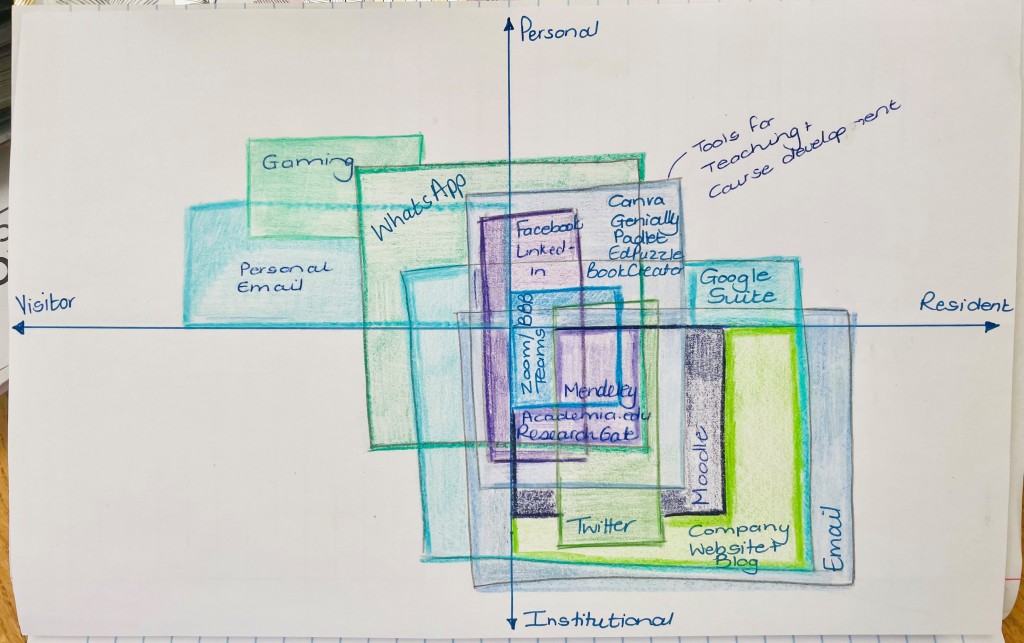What is it about digital that adds distinct value?
It is tempting to think that complexity can be simplified into neatly arranged boxes, or that classifications can be appropriated to elegantly sort and group diversity into order. Perhaps the search for order within chaotic randomness belies the tendency to disregard rich complexity in favour of (over)simplification and generalization. Perhaps it is a case of otherizing.
Prensky (2001) fell trap to such dichotomization with his digital natives and immigrants classifications. Digital natives being those born into a digital internet-remembers-everything era, and immigrants being older generations from before the tech-boom when evidence of a well-spent youth only lives in memories and romanticized fire-side stories. While natives are seen to be tech-savvy from a young age, immigrants are thought to be less so. It assumes that students possess the relevant digital literacies to engage with learning in a digital age and that access to or ownership of emerging technologies implies capability. As many have long pointed out (Bennett & Maton, 2010; Brown and Czerniewics, 2010; Jones & Czerniewics, 2010) such distinctions bely technological determinism suggesting the need to adapt to technology rather than innovating ways in which to shape the technology to users’ requirements and needs.
in this regard, David White suggest a flued continuum on which users can map their digital footprint in terms of their motivation to engage. On either end of the continuum lies visitor and resident status. Motivation to engage with emerging technology on one’s own, driven by a solitary need to complete a specific task falls into the visitor space. On the opposite side of the continuum, the residency side, users are motivated is to engage collectively with others, whether socially and collaboratively towards a particular goal. The visitor and resident continuum is contextualized into personal and institutional spaces where one is motivated to ether act solitarily or collectively. Emerging technologies are appropriated in these spaces in particular ways, and placing these on the matrix that is formed, one is able to map individual and collective use within personal and institutional contexts.
In the image below, I mapped my own uses of technology, creating a digital map for this moment in time. The digital map indicates a high use of emerging technologies that support collaboration and social interaction in institutional contexts, and lesser use of devices in personal , individual spaces. WhatsApp traverses all contexts and is used in both individual and collective personal and institutional spaces. There is a marked distinction in how email is used in different contexts, whether to communicate personally with individuals or to collectively communicate with students, groups of teachers or similar collectives. The company website and blog, as well as Twitter are only ever used in institutional contexts to engage with clients while tools teaching tools like Canva, Genial.ly, Padlet and BookCreator are used in personal and institutional spaces. After a really terrible experience with Facebook many years ago, I now have a personal and professional account with vastly different public vs private settings, but tend to use Facebook mostly for business and rarely for personal use.
 My digital map today
My digital map today
My view of emerging technologies has shifted over the years. In the late 90s and early 2000s, technology was the answer and with glistening eyes and sparkly intentions I worked hard to digitize every lesson and every task. During my Master’s and PhD studies, my once busy social life was dramatically curtailed in favour of quiet, lonely studying, reading and writing, and contemplation. Facebook became my lifeline to the world and I invented ways to rally our local community members for social causes, from building new classrooms for a township creche to rallying the community to donate to their favourite local charities in one big Chariots for Charity day. As my PhD developed, my view of technologies changed to seeing it as a means to empower and inculcate socially embedded innovation. I moved from spending most of my time online with causes, to blending digital and physical spaces to engage, empower and equip individuals and collectives to innovate solutions for the real-life issues they face whether using emerging technologies or not. Tech is no longer the focus but how it can support, bridge gaps, translate solutions and engage communities.
 The building of this creche was entirely achieved through community action on Facebook
The building of this creche was entirely achieved through community action on Facebook
The users I encountered over the past 20 years have in different ways favoured visitor and resident spaces, whether personally or institutionally. The digital native and immigrant discussion was ill-suited to express the deep seated motivation to engage with community groups to achieve social good, but equally to berate, belittle, besmudge human contact. I’ve witnessed social media storms, intense aggression and cyber bullying first-hand, and will never forget meeting someone who was the victim of such an attack the day after it happened and seeing the immensity of suffering she experienced as a result. Whether resident or visitor, digital technologies all mark us in some way or another, shapes our identity and habitus, individually an collectively. The motivation to appropriate emerging technologies, requires not just digital literacies but heart-ware or warm-ware if we are to progress our humanity.